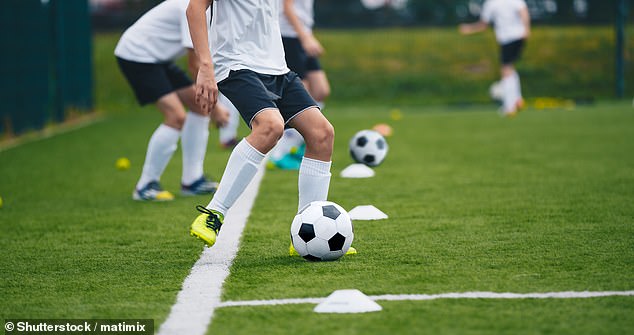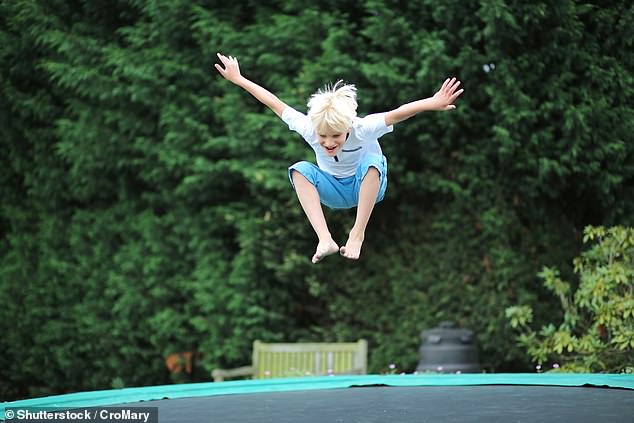Two in five children want to be more physically active, but many spend six hours a day glued to their devices, a study reveals.
More than a third of seven- to 14-year-olds (35 percent) say they get only half an hour or less of exercise each day outside of school.
Meanwhile, one in ten (12 per cent) are active for only a few minutes, despite UK Chief Medical Officers’ guidelines recommending at least an hour.
More than half (53 percent) use screens for more than three hours each day when not in school, and almost a quarter (24 percent) look at devices for six hours.
This is despite only 26 per cent of children saying they would rather be in front of a screen than exercising, according to a survey of 1,000 children aged between seven and 14 by fitness trade association ukactive.
Two in five children want to be more physically active, but many spend six hours a day glued to their devices, a study reveals

More than half (53 percent) use screens for more than three hours each day when not in school, and almost a quarter (24 percent) look at devices for six hours.
Additionally, 40 percent say they want to be more physically active than they are.
Research shows that physically active children have more confidence, less anxiety, better social skills and better academic performance.
Exercise can also reduce the risk of obesity, cancer, heart disease and type 2 diabetes.
The ukactive survey reveals that young people enjoy exercise most when they do it with friends (63 per cent), wear their own clothes (49 per cent) and when the coach or teacher is friendly and supportive (46 per cent).
They also like it when the activity is not too serious (43 percent) and when it takes place in a place that is familiar to them (42 percent).
As children get older, they spend more time in front of a screen, but not more time doing physical activity, the survey found.
The findings come as ukactive publishes a new strategy aimed at getting one million more children active by 2030.
It seeks to better understand the needs and demands of children so that leisure centres can encourage greater participation in physical activity, as well as ensuring that they are received safely.
A ukactive spokesperson said: ‘Children and young people tell us they want to be more active and really value fun and varied activities in familiar and supported environments.
‘As sedentary screen time and mental health problems increase, the Government must take a new policy approach if it is to help create a generation of happy and healthy children, focusing on the essential role of our country’s gyms, swimming pools and leisure centres in supporting the health and wellbeing of the youngest members of our society.

The findings come as ukactive publishes a new strategy aimed at getting one million more children active by 2030.
‘We encourage this new Government to recognise and support the growing demand from children and young people for fitness, dance, swimming and gym activities, alongside traditional sports, and support the sector to reach more young people with the physical, mental and social benefits that physical activity provides.’
Sports Minister Stephanie Peacock said: ‘Grassroots sport has the potential to transform lives, which is why we are building and improving thousands of multi-sport facilities to help you stay active wherever you live.
‘At the same time, we have launched a review of the school curriculum aimed at ensuring that sport is not just the preserve of a privileged few.’


